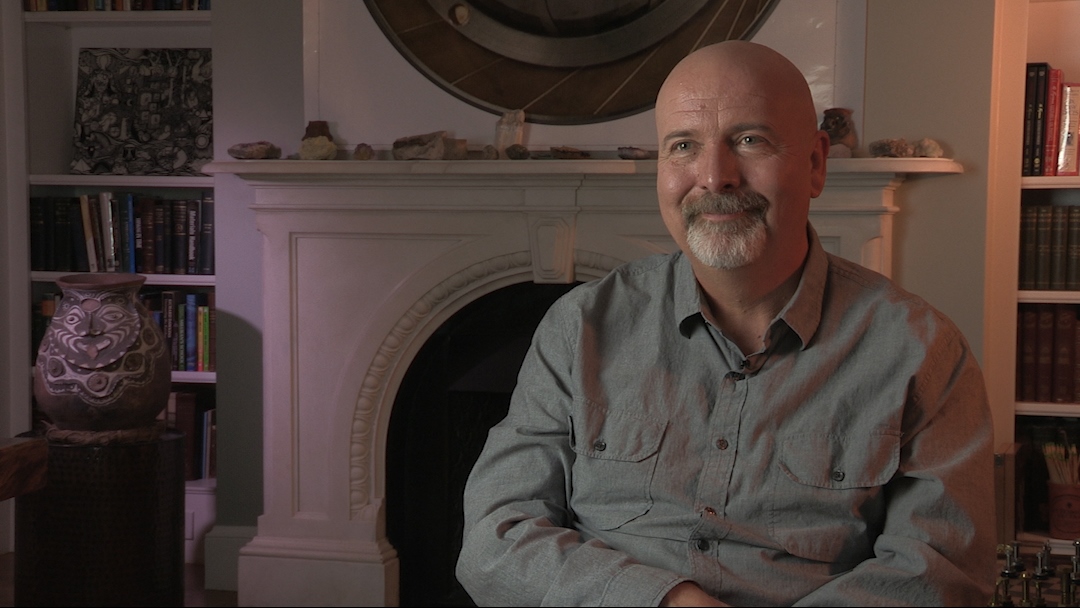NEXT STORY

The idea of the 'other' Internet
RELATED STORIES

NEXT STORY

The idea of the 'other' Internet
RELATED STORIES


|
Views | Duration | |
|---|---|---|---|
| 191. An idea that could revolutionise modern medicine | 130 | 04:26 | |
| 192. Re-examining time in economics | 2 | 126 | 03:41 |
| 193. Artificial intelligence and human health | 91 | 01:47 | |
| 194. Chalk dust – the answer to global warming | 112 | 01:51 | |
| 195. How Surfatron could save the world from global warming | 81 | 02:57 | |
| 196. The idea of the 'other' Internet | 81 | 04:52 | |
| 197. Applied Invention and its three main principles | 158 | 04:34 | |
| 198. Benefits of sharing the men's room with the CIA | 100 | 04:43 | |
| 199. Working with the intelligence agencies | 113 | 04:12 | |
| 200. What I was doing on 9/11 | 99 | 03:00 |


So another thing I'd be interested in looking at is a way of putting, say, chalk dust up into the atmosphere on a steady basis. It's actually a beautiful solution, because if you just stop, everything goes back to normal. So it's... and you don't have to put up that much. So I've been thinking, for instance, of launch systems for doing that, and I've got one that I really love, which I call a Surfatron. It's based on... there's an idea called a Slingatron, which is sort of a spiral centrifuge that accelerates stuff out. But what I'm interested in is sort of a linear version of this. It works more like a whip. So you know how a whip gets smaller and smaller and it ends up supersonic, which is why it cracks. So what I want to do is make a set of tracks, that the wave velocity increases. So the track just moves up and down, and it actually doesn't move up and down very quickly, but the wave propagation velocity accelerates over the length of the track, so there's something that sort of surfs the wave that's attached to the track. The technical problem is that bearing, which is presumably a magnetic bearing or something like that. And so you wave the track up and down with local motors, and you put this thing that rides the track and accelerates as the wave velocity accelerates, and gets fast enough to fling off and certainly get into the stratosphere. Maybe you could build one that was fast enough to get into orbit, get outside the Earth's orbit. So there's another thing that I would love to build, is this Surfatron.
[Q] And where does it have to be?
It depends on whether you just want to get stuff into the stratosphere or you want to get stuff into space. If you want to get stuff into space, you'd probably want to do it near the equator, and you want it to slant up, so maybe Mount Kilimanjaro, where it flings up that way. But if you're just getting stuff into the stratosphere, actually I think a very likely place for it to be is going to be the Tibetan plateau. And I think the Chinese are much more likely to do this than the Americans, because the Americans are... you know, have lost their sense of adventure about this sort of thing. So the Chinese could save the world from global warming. So part of me is tempted to try to convince them to and explain how to do it.
W Daniel Hillis (b. 1956) is an American inventor, scientist, author and engineer. While doing his doctoral work at MIT under artificial intelligence pioneer, Marvin Minsky, he invented the concept of parallel computers, that is now the basis for most supercomputers. He also co-founded the famous parallel computing company, Thinking Machines, in 1983 which marked a new era in computing. In 1996, Hillis left MIT for California, where he spent time leading Disney’s Imagineers. He developed new technologies and business strategies for Disney's theme parks, television, motion pictures, Internet and consumer product businesses. More recently, Hillis co-founded an engineering and design company, Applied Minds, and several start-ups, among them Applied Proteomics in San Diego, MetaWeb Technologies (acquired by Google) in San Francisco, and his current passion, Applied Invention in Cambridge, MA, which 'partners with clients to create innovative products and services'. He holds over 100 US patents, covering parallel computers, disk arrays, forgery prevention methods, and various electronic and mechanical devices (including a 10,000-year mechanical clock), and has recently moved into working on problems in medicine. In recognition of his work Hillis has won many awards, including the Dan David Prize.
Title: How Surfatron could save the world from global warming
Listeners: George Dyson Christopher Sykes
Christopher Sykes is an independent documentary producer who has made a number of films about science and scientists for BBC TV, Channel Four, and PBS.
Tags: whip, Slingatron, Surfatron, stratosphere, Tibetan plateau, Chinese, Americans
Duration: 2 minutes, 57 seconds
Date story recorded: October 2016
Date story went live: 05 July 2017